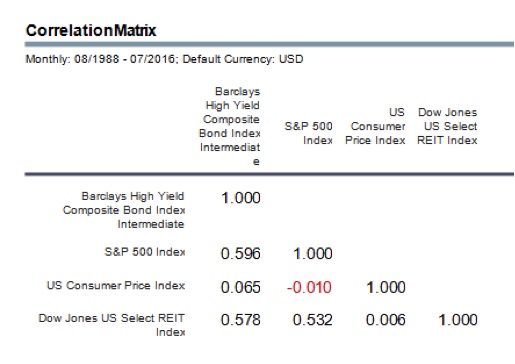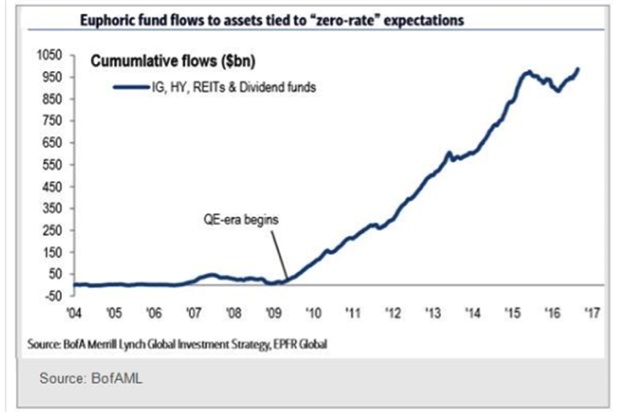Managing Risk When Investing for Income
You might think bonds and real estate investments are always safer than stocks, but they come with their own set of risks.

Most people don't enjoy prolonging time spent in the car, so they search for shortcuts in an effort to arrive at their destination sooner. However, often those shortcuts can backfire—drivers can get lost, wait in traffic or run into a variety of other problems that make them wish they stuck with their original route.
This analogy relates to investors' search for income. In today's low interest rate environment, investors search far and wide for decent yields, trying to earn money faster and arrive at their financial goals sooner. However, investors should understand the risks associated with investing in bonds and high-yield investments.
Let's review some important considerations when deciding how bonds and high-yield investments fit into your overall investment strategy.
From just $107.88 $24.99 for Kiplinger Personal Finance
Become a smarter, better informed investor. Subscribe from just $107.88 $24.99, plus get up to 4 Special Issues

Sign up for Kiplinger’s Free Newsletters
Profit and prosper with the best of expert advice on investing, taxes, retirement, personal finance and more - straight to your e-mail.
Profit and prosper with the best of expert advice - straight to your e-mail.
Know What You Own
Investors should be properly rewarded through returns for the risks they assume. Skittish about stock market exposure but dissatisfied with investment-grade bond returns post-financial crisis, many investors have increasingly turned to high-yield bonds and real estate investment trusts (REITs). Investors rationalize that choice by falsely believing that while high-yield bonds and real estate are riskier than investment-grade corporate bonds and Treasuries, they are at least avoiding the higher risks associated with equities.
Unbeknownst to many people, high-yield bonds and REITs actually have volatility that mirrors that of the stock market at times. The movement of their prices in the same direction is called "correlation."
Re-visiting our driving theme, think of correlation like this: Imagine two delivery trucks traveling down the highway. If both trucks are moving in the same direction all of the time, their movements are 100% correlated. If the trucks are moving in the same direction only half of the time, their movements are 50% correlated.
High-yield bonds and REITS both have meaningful correlation with Standard & Poor's 500-stock index, as illustrated in the chart below. High-yield bond investment returns are correlated to S&P 500 returns about 60% of the time. REIT returns are correlated to the S&P 500 about 53% of the time. This means that high-yield bonds and REITs move up and down in tandem with the S&P 500 more than half of the time. That's no small amount of stock market risk for assets that historically return less than stocks on average.

Don't Overpay
No one enjoys feeling like they overpaid for an asset. However, yield-focused investors are often overlooking high prices in their search for income. Since the financial crisis, cumulative flows to mutual funds invested in investment-grade bonds, high-yield bonds, REITs and dividend funds have soared, likely because investors have been assuming that low interest rates will continue. The chart below illustrates the amount of dollars these funds have attracted.

Don't forget that the prices of bonds and other investments that behave like bonds generally move in the opposite direction of interest rates. So when rates rise, as they have since this year's U.S. presidential election, yield-focused assets bought at record prices stand to see those prices drop in ways that may leave investors feeling burned.
Seek Real (After-Inflation) Returns
Yield-generating investments may fail to keep pace with inflation over time. Current levels of inflation remain low, about 2.20% as of October 2016, compared with historical inflation of about 3.71% from 1958 to October 2016, according to historical data from Dimensional Funds Advisors (DFA). However, if inflation begins to run higher than current interest rates, bond investors could be left in a lurch. Rising inflation and subsequent rising interest rates could produce negative real returns. This result is not unusual, as over thirty-year rolling periods, bonds of all stripes fail to keep pace with inflation about one-third of the time on average, according to DFA data. Keep inflation in mind and properly account for it so that your hard-earned returns do not become consumed.
No asset is risk-free. Every investment carries its own unique risks, and investors should account for those risks and manage them. Traveling too far down the road to avoid one risk (often stock market risk) can magnify other risks and mask where your actual risk exposure lies. Safe travels on the road to capturing real returns and achieving your financial goals!
A licensed attorney, Jared Snider serves as a senior wealth adviser at Exencial Wealth Advisors in Oklahoma City. He strives to help individuals and families attain their goals, manage risk and cultivate peace of mind.
Profit and prosper with the best of Kiplinger's advice on investing, taxes, retirement, personal finance and much more. Delivered daily. Enter your email in the box and click Sign Me Up.

Jared Snider is a licensed attorney and serves as a senior wealth adviser at Exencial Wealth Advisors in Oklahoma City. He guides families, business owners and professionals in goal-based investing, planning and risk management. By creating solutions with clear action steps and follow-through, he strives to create peace of mind and confidence for his clients. Snider earned his Juris Doctor with highest honors from The University of Tulsa College of Law. Prior to joining Exencial, he practiced estate planning and real estate law. He is a member of Exencial's Investment Committee.
-
 Dow Hits New High Then Falls 466 Points: Stock Market Today
Dow Hits New High Then Falls 466 Points: Stock Market TodayThe Nasdaq Composite, with a little help from tech's friends, rises to within 300 points of its own new all-time high.
-
 The Best Vanguard Bond Funds to Buy
The Best Vanguard Bond Funds to BuyInvestors seeking the best Vanguard bond funds can pick between mutual funds and ETFs spanning maturities, credit qualities, tax treatment and geographies.
-
 Are You Afraid of an IRS Audit? 8 Ways to Beat Tax Audit Anxiety
Are You Afraid of an IRS Audit? 8 Ways to Beat Tax Audit AnxietyTax Season Tax audit anxiety is like a wild beast. Here’s how you can help tame it.
-
 Feeling Too Guilty to Spend in Retirement? You Really Need to Get Over That
Feeling Too Guilty to Spend in Retirement? You Really Need to Get Over ThatAre you living below your means in retirement because you fear not having enough to leave to your kids? Here's how to get over that.
-
 Strategies for Women to Maximize Social Security Benefits
Strategies for Women to Maximize Social Security BenefitsWomen often are paid less than men and live longer, so it's critical that they know their Social Security options to ensure they claim what they're entitled to.
-
 This Is How Early Retirement Losses Can Dump You Into Financial Quicksand (Plus, Tips to Stay on Solid Ground)
This Is How Early Retirement Losses Can Dump You Into Financial Quicksand (Plus, Tips to Stay on Solid Ground)Sequence of returns — experiencing losses early on — can quickly deplete your savings, highlighting the need for strategies that prioritize income stability.
-
 How an Elder Law Attorney Can Help Protect Your Aging Parents From Financial Mistakes
How an Elder Law Attorney Can Help Protect Your Aging Parents From Financial MistakesIf you are worried about older family members or friends whose financial judgment is raising red flags, help is out there — from an elder law attorney.
-
 Q4 2025 Post-Mortem From an Investment Adviser: A Year of Resilience as Gold Shines and the U.S. Dollar Dives
Q4 2025 Post-Mortem From an Investment Adviser: A Year of Resilience as Gold Shines and the U.S. Dollar DivesFinancial pro Prem Patel shares his take on how markets performed in the fourth quarter of 2025, with an eye toward what investors should keep in mind for 2026.
-
 Is Your Emergency Fund Running Low? Here's How to Bulk It Back Up
Is Your Emergency Fund Running Low? Here's How to Bulk It Back UpIf you're struggling right now, you're not alone. Here's how you can identify financial issues, implement a budget and prioritize rebuilding your emergency fund.
-
 An Expert Guide to How All-Assets Planning Offers a Better Retirement
An Expert Guide to How All-Assets Planning Offers a Better RetirementAn "all-asset" strategy would integrate housing wealth and annuities with traditional investments to generate more income and liquid savings for retirees.
-
 7 Tax Blunders to Avoid in Your First Year of Retirement, From a Seasoned Financial Planner
7 Tax Blunders to Avoid in Your First Year of Retirement, From a Seasoned Financial PlannerA business-as-usual approach to taxes in the first year of retirement can lead to silly trip-ups that erode your nest egg. Here are seven common goofs to avoid.